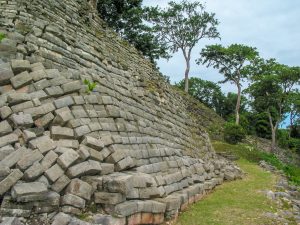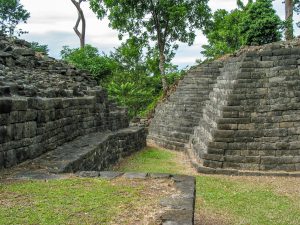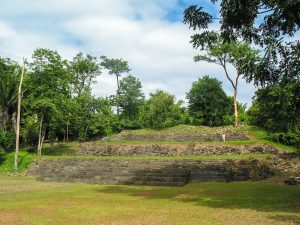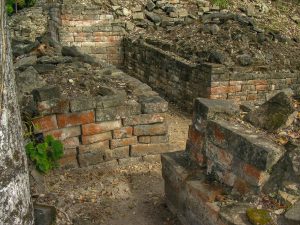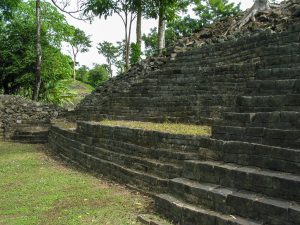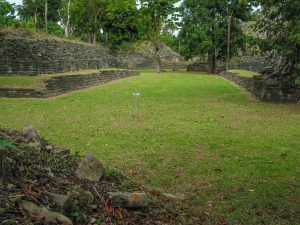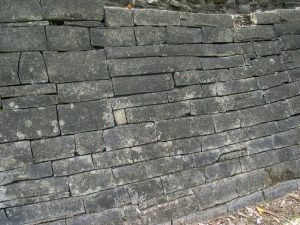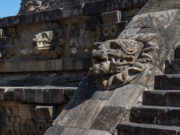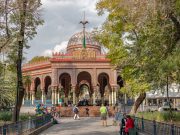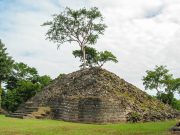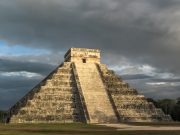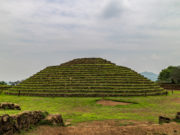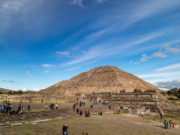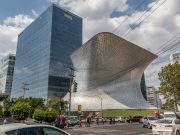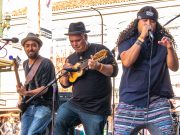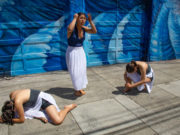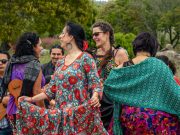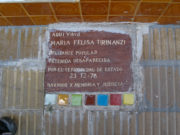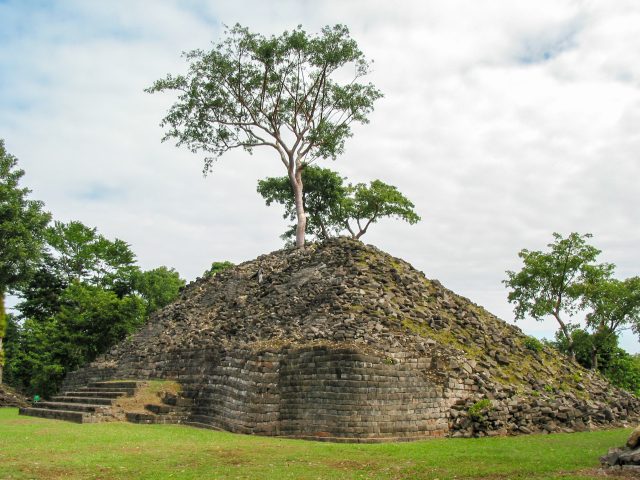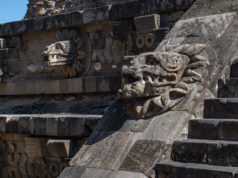Although the ruins at Lubaantun aren’t a secret, they’re not nearly as well known as those at Xunantunich, Lamanai, or Altun Ha because they’re situated in the far southern part of Belize, where until recent years few tourists traveled. When I was last there, in 2004, the main highway down in that part of the country wasn’t even paved all the way yet.
Archaeologists believe Lubantuun was populated during the Maya Classic era, between about 730 and 890 and that it was a trading and ceremonial center.
The most notable aspect of Lubantuun is its name. That’s not the ancient Mayan name of it, discovered on some well-preserved stela. Actually, Lubaantun translates in Maya as “the place of the falling stones” and it was given that name by Anglo archaeologists in the early 20th century because of how the structures are crumbling. The true name of the city is still unknown.
The structures are Lubaantun are different than those scattered across the Yucatan and central Mexico because they’re constructed of fitted stacked stones that have no mortar or other binding to hold them together. As the earth around them settles, they’re prone to collapse. So “Lubaantun” is an appropriate, if not authentic, name.
Although no well-preserved stela or other writings have been found there, Lubaantun is famous for the small ceramic ocarinas, or flutes, that are found there.
Architecturally, the ruins are interesting because they have nicely rounded corners and because of how the flora has taken root in many of the old structures. The two excavated pyramids both still have trees growing out of them. (Of course, before the archaeologists arrived, the structures were all completely covered with jungle plant life of all kinds.)
